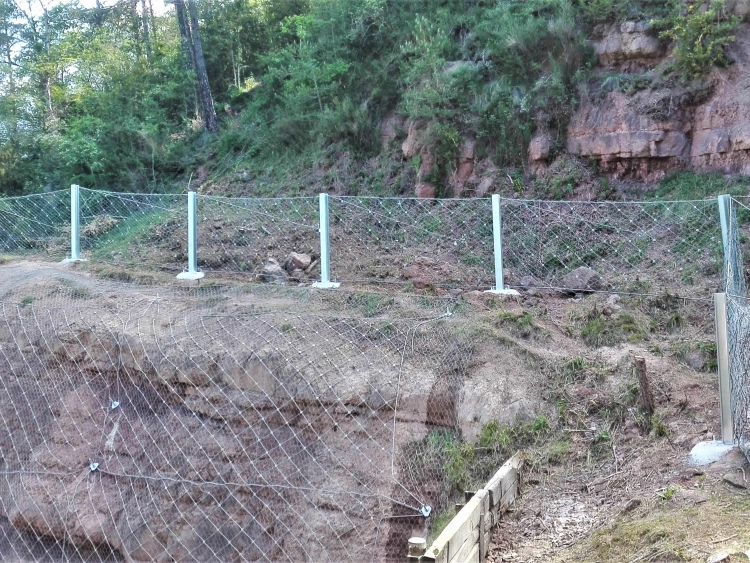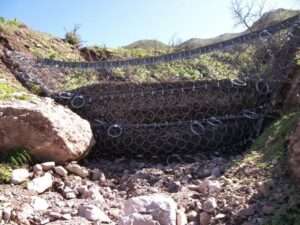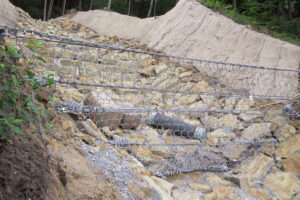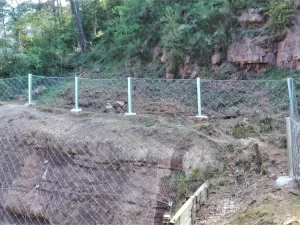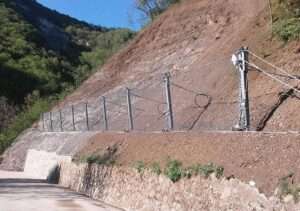Introduction
Rockfalls pose significant risks to infrastructure, transportation, and human safety in mountainous and hilly regions. As natural phenomena, rockfalls can occur due to a variety of factors including weathering, seismic activity, and human impact. To mitigate these risks, engineering solutions such as rockfall barriers have been developed. This article explores the principles of designing effective rockfall barriers, highlighting key considerations, types, and innovations in risk management.
Understanding Rockfall Dynamics
Before diving into the design of rockfall barriers, it is essential to understand the dynamics of rockfalls. The primary factors influencing rockfall behavior include:
1. Rock Characteristics: The type of rock, its structure, and geological properties significantly affect its propensity to fall.
2. Slope Stability: The angle and condition of the slope play a critical role. Steep slopes are more susceptible to rockfalls.
3. Weather Conditions: Rain, freeze-thaw cycles, and seismic activity can weaken rock structures and trigger falls.
4. Human Activity: Construction, mining, and road maintenance can disturb rock masses, increasing the likelihood of falls.
Understanding these factors is crucial for effective barrier design.
Key Considerations in Designing Rockfall Barriers
When designing rockfall barriers, several factors must be considered to ensure effectiveness and longevity:
1. Site Assessment: Comprehensive geological surveys and hazard assessments are essential. Engineers must analyze the site to identify potential rockfall sources and trajectories.
2. Barrier Type Selection: Various barrier types are available, including:
-
- Catch Fences: Flexible structures designed to capture falling rocks.
- Rockfall Drains: Systems that manage water flow to reduce erosion and destabilization.
- Active Barriers: Innovative solutions that actively monitor and respond to rockfall risks.
- Passive Barriers: Static systems that protect against rockfalls without active intervention.
3. Material Selection: The materials used for barriers must withstand environmental conditions, impacts, and corrosion. Common materials include steel, concrete, and composite materials.
4. Design Standards and Regulations: Compliance with local and international standards is crucial. Engineers must adhere to guidelines set by organizations like the International Society for Rock Mechanics (ISRM) and national safety agencies.
5. Maintenance and Monitoring: Regular inspections and maintenance are vital for ensuring barrier functionality over time. Technological advancements, such as remote monitoring systems, can provide real-time data on barrier performance.
Innovations in Rockfall Barrier Design
Recent advancements in technology and materials have led to innovative solutions in rockfall barrier design:
1. Smart Barriers: Integration of sensors and monitoring systems can enhance the effectiveness of rockfall barriers. These smart barriers can detect changes in rock stability and alert authorities to potential risks.
2. Eco-friendly Materials: The use of sustainable materials in barrier construction minimizes environmental impact. Recycled steel and bio-based composites are becoming more common in modern designs.
3. Modular Systems: Modular barrier designs allow for flexibility and adaptability in various terrains. These systems can be easily assembled and disassembled, making them suitable for temporary installations or areas with changing conditions.
4. Simulation Software: Advanced modeling software enables engineers to simulate rockfall events and analyze barrier performance under different conditions. This aids in optimizing designs before construction.
Case Studies
Several successful implementations of rockfall barriers demonstrate their effectiveness in risk management:
1. The Kaikoura Coast, New Zealand: Following a major earthquake in 2016, rockfall barriers were installed along the coastal highway to protect against falling rocks. The project included comprehensive monitoring systems to ensure ongoing safety.
2. The Brenner Pass, Italy: In this high-risk area, a combination of passive and active barriers has successfully reduced rockfall incidents, protecting both roadways and railways.
3. Rockfall Protection in Yosemite National Park, USA: Innovative catchment structures were designed to safeguard popular hiking trails from rockfalls, allowing for safe public access while preserving natural landscapes.
Conclusion
Designing effective rockfall barriers is a multifaceted challenge that requires a thorough understanding of geological factors, careful planning, and innovative engineering solutions. As technology advances and environmental considerations become more prominent, the future of rockfall barrier design will likely incorporate smarter, more sustainable practices. By prioritizing risk management through these engineered solutions, we can safeguard lives, infrastructure, and the environment from the dangers posed by rockfalls.


